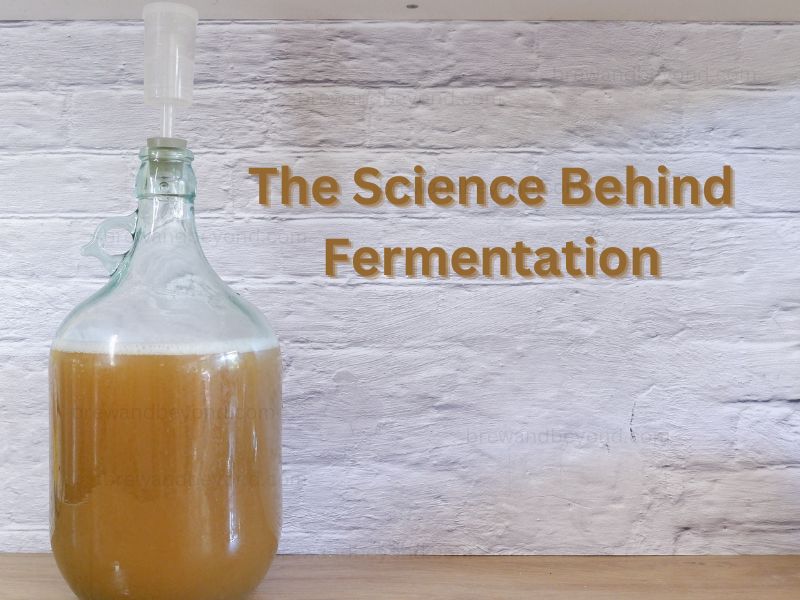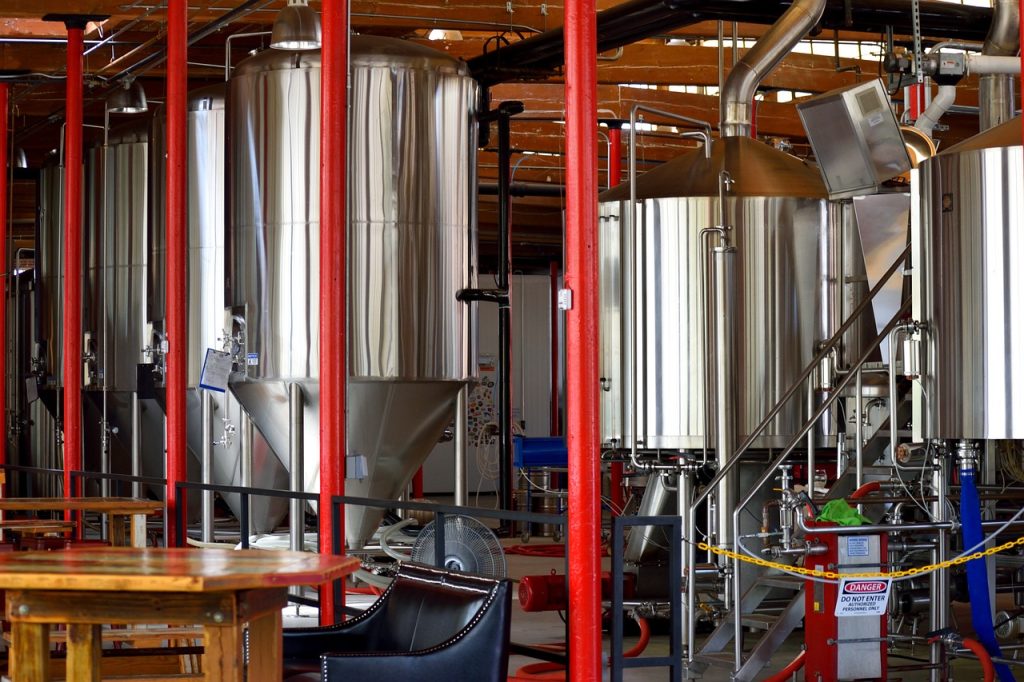Have you ever wondered how beer magically transforms from its basic ingredients into a flavorful and refreshing beverage? It’s all thanks to the fascinating process of fermentation. In this article, we will delve into the science behind fermentation and explore the incredible transformation that occurs during the brewing process. You’ll discover the role of yeast, the importance of temperature control, and the chemical reactions that create those sought-after flavors. So, grab a cold one and join us on this journey to uncover the secrets behind beer’s magical transformation.
What is Fermentation?
Fermentation defined
Fermentation is a natural process that has been used for centuries to transform raw ingredients into a wide array of products. In the context of brewing beer, fermentation is the conversion of sugars into alcohol and carbon dioxide by yeast. This magical transformation is what gives beer its unique flavors, aromas, and characteristics.
Role of yeast
Yeast, a single-celled microorganism, plays a crucial role in fermentation. It consumes the sugars present in the beer wort and converts them into alcohol and carbon dioxide through its metabolic activity. Without yeast, the fermentation process would not be possible, and we would not have the delicious brews that we enjoy today.
The Basics of Beer Brewing
Ingredients in beer
Beer is crafted from a handful of key ingredients: water, malted grains, hops, and yeast. Water provides the foundation for the beer and affects its overall flavor profile. Malted grains, such as barley, contribute fermentable sugars that yeast can utilize. Hops add bitterness, aroma, and flavor to the beer. Finally, yeast is responsible for fermentation, turning those sugars into alcohol and carbon dioxide.
Mashing
To begin the beer brewing process, malted grains are milled and mixed with hot water in a process called mashing. The hot water activates enzymes present in the malted grains, which convert the starches into fermentable sugars. This sugar-rich liquid known as “wort” is then drained off, leaving behind the spent grains.
Boiling the wort
After mashing, the wort is transferred to a kettle and boiled. During this boiling process, hops are added at different stages to achieve the desired bitterness, flavor, and aroma. Boiling the wort also sterilizes it, ensuring that any harmful microorganisms are killed before fermentation begins.
Cooling and oxygenation
Once the boiling process is complete, the wort needs to be rapidly cooled down. This is done to create an optimal environment for yeast and prevent the growth of undesirable microorganisms. After cooling, the wort is oxygenated by exposing it to air, allowing the yeast to have a sufficient supply of oxygen for a healthy fermentation process to take place.
Beer Yeast and its Role in Fermentation
Different types of yeast
There are various types of yeast used in beer brewing, each contributing its own unique characteristics. Ale yeast, including strains of Saccharomyces cerevisiae, ferments at warmer temperatures and produces fruity and estery flavors. Lager yeast, on the other hand, ferments at colder temperatures and results in a cleaner and more crisp profile. Additionally, there are specialty yeast strains that can produce specific flavors, such as Belgian yeast strains that provide spicy and phenolic notes.
Yeast metabolism
Yeast metabolism is a complex process that involves the consumption of sugars and the production of alcohol and carbon dioxide. Yeast cells break down the sugars into smaller molecules, releasing energy and producing alcohol as a byproduct. Carbon dioxide gas is also released during this process, giving the beer its characteristic effervescence.
Fermentation process
The fermentation process can be divided into three main stages: primary fermentation, secondary fermentation, and conditioning. In primary fermentation, yeast consumes the majority of the sugars and produces the most significant amount of alcohol. Secondary fermentation allows the yeast to further metabolize any remaining sugars, creating a smoother and more refined flavor profile. Conditioning involves the maturation of the beer, allowing it to develop and clarify over time.
The Fermentation Process
Primary fermentation
During primary fermentation, yeast cells actively feed on the sugars in the wort and multiply. This vigorous fermentation stage typically lasts for a few days to a week, depending on various factors such as yeast strain, temperature, and sugar content. At this stage, the beer begins to transform as sugars are converted into alcohol and carbon dioxide.
Secondary fermentation
Following primary fermentation, some brewers choose to conduct a secondary fermentation. This step allows the beer to further mature and develop its flavors. During secondary fermentation, the beer is transferred to a secondary vessel, often a carboy or a keg, where any remaining sugars are metabolized by the yeast. This promotes a smoother flavor profile and can lead to better clarity in the final product.
Conditioning
After primary and secondary fermentation, the beer enters a conditioning phase where it is left to rest and mature. This period varies depending on the style of beer, but it can range from a few weeks to several months. Conditioning allows the flavors to meld together and stabilize, resulting in a more refined and well-rounded beer.
The Role of Sugar
Sugar sources in beer
The sugars in beer primarily come from malted grains, such as barley, which undergo enzymatic activity during the mashing process to convert starches into fermentable sugars. Additionally, some brewers add adjunct ingredients like corn or rice to provide additional sources of sugar for fermentation.
Conversion of sugar to alcohol and carbon dioxide
When yeast consumes sugars, it undergoes a metabolic process known as fermentation. Enzymes within the yeast cells break down the sugar molecules, producing alcohol and carbon dioxide as byproducts. The alcohol gives beer its intoxicating effects, while carbon dioxide contributes to the beer’s carbonation.
The Generation of Alcohol and Carbon Dioxide
Alcohol production
The production of alcohol occurs when yeast metabolizes the sugars present in the wort. Yeast cells break down the sugar molecules through enzymatic reactions, releasing energy and producing ethanol (alcohol) as a metabolic byproduct. The concentration of alcohol in beer is determined by the amount of sugar present in the wort and the efficiency of yeast fermentation.
Carbon dioxide release
As yeast consumes the sugars present in the wort, it produces carbon dioxide gas as a natural byproduct. This carbon dioxide is released during fermentation and is responsible for the bubbly, effervescent nature of beer. Carbonation levels can be controlled by adjusting the fermentation process and can range from low to high, depending on the desired style of beer.
Effects on Beer Flavor
The production of alcohol and carbon dioxide during fermentation has a significant impact on the flavor of beer. Alcohol contributes to the beer’s body and sweetness, while carbon dioxide adds a refreshing and lively character to the brew. The balance between these two elements, along with the other ingredients and brewing techniques, determines the overall flavor profile of the beer.
Control Factors in Fermentation
Temperature control
Temperature plays a crucial role in fermentation. Different yeast strains have specific temperature ranges at which they perform optimally. Controlling the temperature during fermentation is vital to ensure yeast activity and to prevent off-flavors caused by excessive heat or cold.
pH level
Maintaining the appropriate pH level throughout the brewing process is essential for proper yeast function and fermentation. Yeast typically operates optimally at a pH range of 4.0-5.0. Monitoring and adjusting the pH, if necessary, contribute to a healthy fermentation process and can prevent undesirable flavors or yeast stress.
Oxygen exposure
Oxygen exposure can have a detrimental effect on fermentation. While oxygen is necessary during the brewing process to oxygenate the wort before fermentation, prolonged exposure to oxygen after fermentation can lead to off-flavors and stale beer. Minimizing oxygen exposure, especially during the later stages of fermentation and during packaging, helps maintain the beer’s quality.
Yeast health and vitality
The health and vitality of the yeast play a crucial role in fermentation. Proper yeast management, including yeast propagation and pitching rates, ensures that yeast cells are healthy and ready to ferment the wort. Nutrient supplementation can also be beneficial in providing yeast with the necessary resources for optimum fermentation.
Fermentation Vessels and Equipment
Fermentation tanks
Fermentation tanks are specially designed vessels used to contain the wort during fermentation. They come in various sizes and materials, such as stainless steel, glass, or plastic. The choice of fermentation vessel depends on factors such as batch size, budget, and desired fermentation temperature control.
Airlocks and blow-off tubes
Airlocks and blow-off tubes are essential tools used during fermentation to create a controlled environment. They allow the release of carbon dioxide gas without exposing the beer to oxygen or contamination. Airlocks and blow-off tubes can be attached to the fermentation vessel to provide a pathway for the escaping gas.
Hydrometers and refractometers
Hydrometers and refractometers are instruments used to measure the specific gravity, which indicates the sugar content of the wort. These tools are essential in monitoring the progress of fermentation and determining when fermentation is complete. By measuring the specific gravity at different stages of fermentation, brewers can calculate the alcohol content and make necessary adjustments.
The Science of Flavor Development
Esters and higher alcohol
Esters and higher alcohols are organic compounds that contribute to the flavor and aroma profiles of beer. During fermentation, yeast produces these compounds as byproducts of its metabolic activity. Esters are responsible for fruity and floral flavors, while higher alcohols can add spicy or solvent-like notes. The concentration and types of esters and higher alcohols produced depend on various factors, including yeast strain and fermentation conditions.
Hop compounds
Hops, the flowers of the Humulus lupulus plant, add bitterness, aroma, and flavor to beer. They contain a range of chemical compounds, including alpha acids, beta acids, and essential oils. During fermentation, these hop compounds interact with yeast and contribute to the overall flavor complexity and aroma of the finished beer.
Lactobacillus and sour flavors
In certain beer styles, such as sour beers, specific strains of bacteria, like Lactobacillus, are intentionally introduced during fermentation. These bacteria produce lactic acid, leading to sour flavors in the beer. The presence of lactobacillus and other souring bacteria adds another layer of complexity to the flavor profile of these unique beers.
Effects of Fermentation on Beer Characteristics
Alcohol content
Fermentation directly impacts the alcohol content of beer. The type and amount of sugars available for yeast fermentation determine the final alcohol level. Brewers can control the fermentation process to achieve the desired alcohol content, which ranges from low-alcohol beers to high-alcohol brews.
Carbonation level
Carbonation in beer is a result of the carbon dioxide produced during fermentation. Brewers can choose to carbonate their beer naturally through fermentation or artificially by adding carbonation before packaging. The level of carbonation affects the beer’s mouthfeel, crispness, and overall drinking experience.
Color and clarity
Fermentation can contribute to the color and clarity of beer. During fermentation and conditioning, fine particles and sediment settle, resulting in clearer beer. Additionally, certain fermentation byproducts and compounds can influence the color of the final brew, ranging from pale yellow to deep amber or even dark brown.
Mouthfeel
The fermentation process affects the mouthfeel, or texture, of beer. The presence of alcohol and carbon dioxide contributes to the perceived body and effervescence of the brew. Yeast selection and fermentation techniques can influence the mouthfeel, leading to beers that range from light and crisp to full-bodied and smooth.
Aroma and taste
Perhaps the most significant impact of fermentation on beer is its influence on aroma and taste. The combination of yeast metabolism, hop compounds, and other fermentation byproducts produces a vast array of flavors and aromas, ranging from malty and fruity to hoppy and spicy. The intricate interplay between these factors provides the unique and diverse flavors found in the world of beer.
In conclusion, fermentation is the magic behind beer brewing, transforming simple ingredients into flavorful and refreshing beverages. From the role of yeast in converting sugars into alcohol and carbon dioxide to the control factors that ensure a successful fermentation process, every step plays a vital role in creating the perfect brew. Understanding the science behind fermentation allows brewers to fine-tune their techniques and produce a wide spectrum of beers, each with its own distinct characteristics. So raise a glass to the wonders of fermentation, and appreciate the science that brings us the beers we love. Cheers!
© 2023 by brewandbeyond.com. All rights reserved. No part of this document may be reproduced or transmitted in any form or by any means, electronic, mechanical, photocopying, recording, or otherwise, without prior written permission of brewandbeyond.com.





